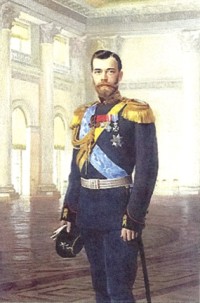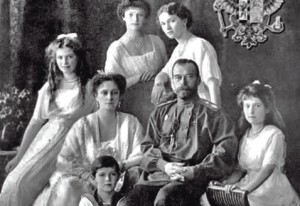| Home - Back Issues - The Team - Contact Us |
 |
| Volume 10 |Issue 13 | April 01, 2011 | |
|
|
History Murder at Ekaterinburg Azizul Jalil “I am not yet ready to be Tsar. I know nothing of the business of ruling.”
The Romanov family ruled Russia by divine right for three centuries. The last Tsar's official title was Nicholas II, Emperor and Autocrat of All the Russians. His apprehensions about readiness to reign were proved right. He was an inept and weak ruler, dependent on his wife Alexandra who was under the influence of an evil monk, Rasputin. At the same time, Nicholas' regime, with his knowledge or at least in his name, carried on a ruthless oppression of the working class, the peasantry and the common people. The First World War also led to economic collapse and social upheaval in Russia, which ignited two revolutions in 1917. The first revolution resulted in the abdication of the Tsar. The family was moved to Ekaterinburg in the Ural Mountains after a civil war broke out. In July 1918, the royalist forces seemed to be closing in on the family and the captors were concerned. Notes were passed by the royalists to the Romanovs through nuns from the Novo-Tikviniski Convent. They were allowed by the guards on the recommendation of the Tsar's personal physician, Evgeny Botkin, to deliver supplies of eggs, milk and cream each morning. The doctor had loyally followed the Tsar to exile to take care of him. The secret messages received by the Romanovs encouraged them to be ready to escape through the window after getting the right signal from outside. The royal family, who had a handicapped son, was ambivalent and concerned about the feasibility of such an attempt and its success. It later transpired that a few of the notes were sent by the guards themselves to entrap the prisoners and find out about any plot to escape. In the end, the Ural Regional Soviet became nervous and executed them in the basement of Ipatiev House on July16/17, 1918 and hastily disposed their bodies in the nearby Koptyaki Forest. However, in a strange turn of history, Russians have gradually revived the legacy of Nicholas II after the breakup of the Soviet Union in 1991. He is currently regarded by the Russian Orthodox Church as Saint Nicolas and a church called The Church on the Blood was built in Ekaterinburg in 2003 on the site where the royal family was shot. Many Russians go there to pray and show their devotion and loyalty to the family. On the other hand, Stalin and Lenin's mummies , on display in glass cases for decades at the Red Square with 24 hour honour guards, which I had seen myself at the Red Square during my Moscow visit in 1956, have been ignominiously removed and buried elsewhere. On July 16, 1918, Nicholas II, his wife, four daughters and one son got up in the morning at the Ipatiev House, their place of confinement at the hands of the Bolshevik captors. They were surprised to see a new set of guards in the hallway who seemed to somewhat intrude upon their privacy. This was a bit unusual even in the distressed condition they were in but little did they know that the new arrangements were in fact a preparation for the final act-the elimination of the Romanovs. Late that night, Yurovsky, the new guard commander, asked the family to get up and get ready to move elsewhere. They were brought down to the basement cellar with one light, along with the Tsar's doctor and a few personal staff and the cook-a total of eleven persons.
They were lined up closely in rows against the wall as if a group picture would be taken. Suddenly the door opened and Yurovsky with his associates entered the room fully armed. The commander then red out from a statement saying 'in view of the fact that your relatives in Europe continue their assault on Soviet Russia , the presidium of the Ural Regional Soviet has sentenced you to be shot…'. In the statement the Tsar was also accused of being 'guilty of countless bloody crimes against the people'. Nothing was mentioned about the family members and the staff. The royal family was shocked but soon Yurovsky shot the Tsar in his chest from close distance with his Mauser pistol. The Tsar fell down and collapsed. Then all the guards started firing on the rest of the prisoners and when they fell on the ground, stabbed those who were still alive with bayonets till they died. All these took a little time as the 70 bullets that were fired ricocheted of the precious stones that the Romanovs had sewn in their clothes. The small room became full of smoke and smell of gun powder, blood and human tissue. The bodies were then carried in a truck to the Koptyaki Forest to an abandoned mine and buried there in shallow graves in the very early hours of July 17. The British consul, Thomas Preston, living close to the place of the murder got news of the killing and went to the telegraph office in the morning to inform his government in London. His message read, 'The Tsar Nicholas II was shot last night.' A man in the line snatched the paper from his hand and rewrote it, 'The hangman Tsar Nicholas II was shot today-a fate he richly deserved.' The British diplomat had reluctantly agreed to the changes to let the telegraph go. Official records and Central Communist Party meeting proceedings in Moscow do not have any trace of the subject of the execution of the Romanovs being discussed formally and there is no mention of who gave the final decision to murder the entire royal family. Lenin is believed to have been briefed about the developments in Ekaterinburg but apparently left the fate of the royals to be decided locally by the Ural Bolsheviks who were holding the Tsar and his family. On July18 evening, Lenin was chairing a meeting of the People's Commissars in the Kremlin when Sverdlov, one of the commissars, whispered something in his ear. He was then allowed to make an announcement regarding the execution of Nicholas. A show of hands was taken and a resolution passed approving the decisive action of the Ural Regional Soviet. A press announcement appeared in the Moscow edition of the Izvestiya the following day. The Western response to the news was subdued and often critical-the newspapers were too busy reporting the news of World War I. The Daily Mail said: Nicholas was a poor little Tsar and his life and death were pitiful. The weekly Graphic was most critical noting that Nicholas had suffered 'a fate which he had often ordered for many of his subjects' and that his conduct during the war had found him 'completely wanting in all qualities of statesmanship.’ Note: This article is based primarily on Helen Rappaport's book titled “The Last Days of the Romanovs” published in 2009, which contains recent researches and archival materials now available in Russia on the events in Ekaterinberg in July 1918.
Copyright
(R) thedailystar.net 2010 |

